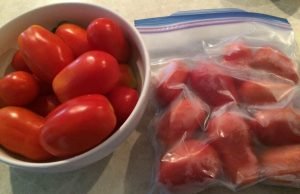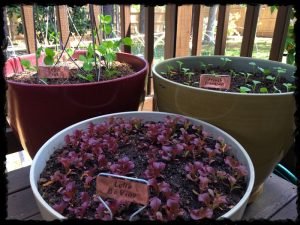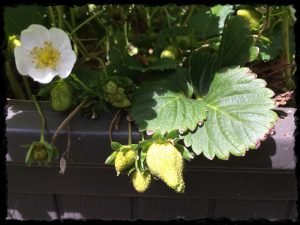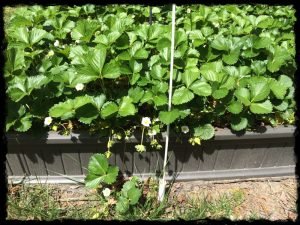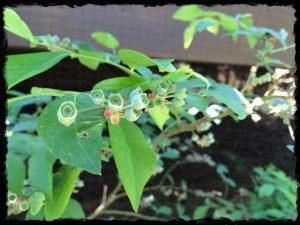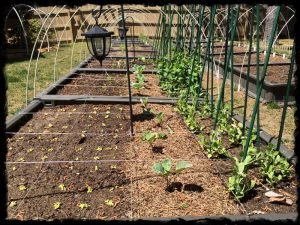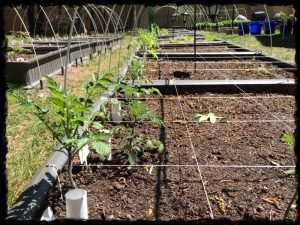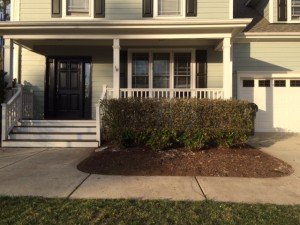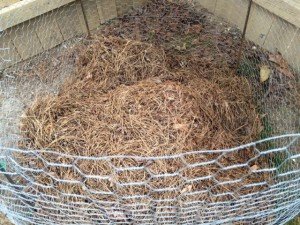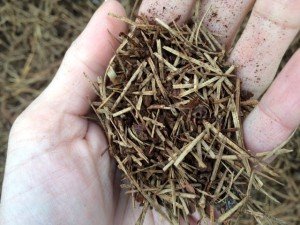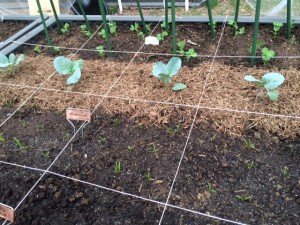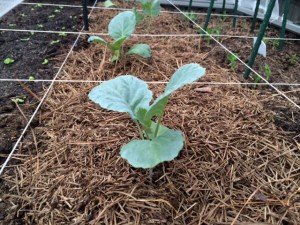This year, in particular, is full of new beginnings. I welcomed the New Year in with a toast and a cheer from my home in Apex, NC. Just a few months later, this native midwesterner calls Long Island, NY home.
The question I was asked most often about the move was, "Are you going to take your garden with you to New York?". I had 11 individual 4'x4' beds for annuals that constituted the main garden. Separately I had 3 individual 4'x4' beds that were permaculture consisting of asparagus in one, strawberries in another and herb garden in the third. The family that is buying my house in a few weeks will inherit these three boxes. The other 11 beds are disassembled and stored in the basement of the house I am renting for a bit.
The second most common question was, "Will you be able to grow anything in the cold up there?". This question was a curious one to me. I had check the Hardiness Zone Map and both Apex and most of Long Island are Zone 7b, but no one could believe that Long Island and Raleigh are roughly the same growing climate. Despite the incredulity of the south, I should be able to grow roughly the same varieties and seasons in NY as I did in NC.
For the first year while I rent, my growing will be restricted to hydroponics and containers. I am looking forward to a year from now, buying some asparagus crowns and a backyard to put them in!
Read MoreThe last frost date for this area passed without incident on April 9th and today was my first day home to survey the perennials and sow some annuals.I'm just going to say it, my over-wintered herb garden is just darned pretty this spring. And I am beside myself that the chives are not just alive but thriving! After years of refusing to grow for me, they are vigorous and even blooming.I was also ecstatic to see the blueberries bountifully in bloom!Last year the blueberries were conned into blooming by the false spring and a hard, late frost killed most of the flowers. A feeble second bloom happened after the last frost but didn't amount to much.The strawberries were also a pleasant surprise, not just sporting a healthy head of blooms but some hard green strawberries already just waiting for the warmth of the sun to make them blush.I threw caution to the wind a few weeks ago and mixed up the assorted lettuce seeds I had on hand and sowed them thickly in 1/2 of a bed. I love the mix of the reds, greens and the little ones already wearing speckles.And lastly I laid down 18 rows of spinach in the front 3/4ths of these beds that will also host 2 tomato plants each in a few weeks.Ahhhhh...the gardener's Spring has finally sprung!
Read MoreTo create your own permaculture summer:
Start with a good variety of fruits, berries and herbs that pretty much take care of themselves year after year.
Add to that background of growth, some tender green leaves (lettuce and spinach will do nicely) and one hungry rabbit.
Voila! You are back to your permaculture staple of fruits, berries and herbs with no pesky greens to worry about.
This, in a nutshell, is my summer.The herbs bolted and are setting seed now. The strawberries are producing well but I haven't covered the bed so the birds are beating me to many of the berries.The tower of asparagus is holding up very nicely under the accumulating mass of growth and the asparagus themselves are inexplicably sending up sporadic spears (3 in the pic below).The figs are plentiful and beginning to ripen. The birds also beat me to the first fig of the year but they don't seem to have seen the one on the other side yet.The blackberries are ripening by the handful daily and the blueberries are plentiful, but stubbornly green.The rabbit problem appears to be solved so now I am just patiently waiting for August when I can plant more greens for fall.
Read MoreAfter an early, false spring in February that fooled blueberries and peaches into blooming followed by the rest of a perfectly normal winter that felt like it lasted forever, spring finally did come and then go in a flash and we are now fully into summer in Zone 7b.My asparagus harvest was light this year, which I attribute to the early burst in February, with many spears freezing at the end of the false spring. I don't know if the freeze affected the crowns or if it was just a coincidence. An interesting side note, for each of the last two years I have had a second burst of spears in fall when nighttime temps dip into the 40s. It will be interesting to see if I do and how much it produces this year.In the meantime, each of the crowns has a few spears that have been allowed to grow tall and fern-like. Every summer I try something a little different to contain all this greenery that feeds the crown for next year's harvest and each year the greenery either slowly or not so slowly overtakes my supports. I think I may have won this year with this 4 pole support, similar to what I have used for snap peas on a larger scale. Currently the asparagus are around 5 1/2 feet tall and being easily supported.The herbs that overwintered are in full flower, some so prodigiously that I trimmed them back to allow everyone a little sun and space.While I wait for the blackberries and blue berries to ripen, my favorite summer treat this year is free-stone peaches halved and grilled for 4 minutes per side. They are a perfect addition anything you are serving up!
Read MoreIt is the day after Christmas and I wanted to peek at a couple of presents, patiently waiting their turn in the garden.We have had a few light freezes in the Raleigh area and at least one hard freeze so far this winter so the parsnips and carrots should be busily converting the starches into sugars making them sweet and delicious.I pulled up a couple of volunteers to roast along with the leftovers for tonight's meal and am pleased with the weight they have put on in the past 2 months. Taste Test to come!
Read MoreAutumn has arrived in North Carolina, bringing with it the final harvest of bell peppers, roma tomatoes and serrano peppers.The herb garden has brushed off the first few light freezes and stands ready to make meals fragrant and savory for months to come. I am confident that the thyme, oregano and sage will over winter well and hope that the french tarragon and parsley will also.Parsley is such a staple of fall and winter dishes that I have more growing on my deck. I have been poaching from the deck parsley for a few weeks thinking that it would not handle the frosts as well, but so far it is also doing wonderfully.In previous years I have repeatedly removed pine needles from the garden beds only to replace it with a different mulch. This year I have come to my senses and am embracing the pine trees taking care of mulching for me.Collards, carrots, cabbage and parsnips are tucked into their naturally (and effortlessly) mulched beds.The fall planting of sugar snap peas has been supplying tender pea shoots and now has peas forming as well.The hydroponic herbs were changed over 10 days ago to the varieties I know and love to cook with and are already doing quite well. I am growing 2 plantings each of my favorite basils and cilantros, 3 of the flat leaf parsley and just for fun I am trying to grow 2 red kales hydroponically.With the Super Bowl and attendant tomato starts almost 2 months away, this cozy, fall garden that is mostly taking care of itself feels like a recess.
Read MoreDay 46 of the prepackaged herb pack that came with my AeroBount and I have excellent basil growth, both genovese and thai. The mint was just starting to grow and the cilantro, parsley and chives never really took off. The genovese basil, while in the same family, is not the basil I usually grow. I do not know if it is a function of the variety or of the hydroponics but it bruises extremely easy and blackens quickly on warm dishes.My Baker Creek order came in last week with seeds for my hydroponic herbs and counter top microgreens so I decided to ditch the prepackaged herbs and start my own this weekend.My aero garden has space for 9 pods so I planted 2 of each except for the parsley that I planted 3 pods of because fall stews + parsley = YUM!
Read MoreThis year I grew the heirloom collards called Georgia Southern Creole, a pre-1880 southern variety that has done quite well overall.Growing organically means that some of the leaves were ventilated by a mid-summer cross-striped cabbage worm invasion (treated with BT) and that I am currently trying to diminish the whitefly population with a hose and organic soap. Having no pests is not an option, keeping them in check is the goal.No matter how your collards were grown, its always best to give them a good soak and cleaning before cooking and the easiest way to do that is to fill up a sink with enough water to cover then swish, swirl and agitate, drain and repeat.I have tried a number of collards recipes and variations since moving to the south 3 years ago and this is the one I like best so far:Braised Collards:
1 lb of washed collards, stems still on
1 TBS oil (I use an extra virgin olive that is good for cooking, but any vegetable oil should work)
3 slices of thick sliced bacon, cut into lardons
1/2 tsp red pepper flakes (more or less depending on preference)
1 medium onion, chopped
1 TBS red wine vinegar
6 TBS stock (chicken, vegetable or mushroom)
Salt to season
Remove stems from collards and stack leaves and stems separately. Finely dice the stems and set aside. Stack a few collard leaves and roll into a cigar shape and cut crosswise (chiffonade) into 3/4" pieces, repeat until all leaves are cut and set aside separate from the stems.In a large frying pan (I like to use my 10" straight walled pan) on medium-high, heat oil until hot but not smoking. Add bacon and red pepper flakes and stir until bacon begins to crisp. Add onion and diced collard stems. Cook until onions are translucent and stems have begun to soften, about 10 minutes.Add the chopped leaves one handful at a time, turning into the bacon and onion mixture after each handful before adding the next. When all of the collards have been added and turned into the mixture, salt to season. When the mixture begins to sizzle, add the red wine vinegar and use a wooden spoon to gently deglaze the pan while turning the mixture.Add your stock* and turn into mixture, cover and turn heat to low. Let cook another 10-15 minutes until greens reach desired softness. If necessary, add more stock to keep from drying out.*Note - I filter and freeze the water after I have rehydrated morels and use this to add liquid and a delicious umame component to many dishes, including this one.
Read MoreThis post comes after more than a year of researching every way I can think of and completely failing to find anything related to the matter at hand. The matter at hand is the second growth of asparagus spears in the early fall, long after the asparagus crowns have been allowed to grow the long, bushy fronds they need in order to feed the crown for next year's growth and more specifically, whether or not a small portion of the second growth can be harvested.Unable to find any information either for or against sneaking a few of these late season spears, I have had to reason this out for myself for the past two years and while the result is probably entirely predictable (Garden fresh asparagus in fall? Yes please!), I like to think my reasoning well rooted in a layman's pseudo-botany. The rationale goes something like this: the individual asparagus crowns have been photosynthesizing since May, and of the new spears coming up in September/October I am only taking about 1 out of every 3 of the new growth spears and then only off of crowns that already have more than 3 stems that have fully grown out and are working hard to supply nourishment to the crown to take it through winter and make a stronger growth next year.With 16 crowns all together (8 Jersey Knight and 8 Purple Passion) all of which are enjoying a youthful resurgence right now, this equals out to around 4-5 spears per week that are coming indoors and leading to some interesting, not-normally-on-the-same-plate combinations. This afternoon for lunch, I sauteed some asparagus picked 30 minutes earlier along with some Italian kale harvested at the same time.But my favorite has been adding asparagus to my Whatever Is Fresh Scrambles!This one featured rehydrated morels, 4 spears of asparagus, 4 cherry tomatoes and 2 red serrano peppers - all from the garden except for the morels. I saute all ingredients except the more delicate tomatoes in butter with a little olive oil until the asparagus is just shy of done.When the asparagus has softened, add scrambled eggs to the mix then fold in the quartered cherry tomatoes.When the eggs have finished cooking, plate with a little shredded cheese of your choosing - I have used both colby-jack and mozzarella and both have worked wonderfully. Top with your choice of fresh herb (I alternate between basil and dill) and voila - delicious and nutritious meal in just a few minutes!
Read MoreMy Glass Gem Corn has been happily drying above my home office and today was the day to strip the cobs and put up the kernels for popcorn and next year's planting. If you have been following my blog for any amount of time you know that I have an abundant affection for this particular varietal which translates into an excess of photos...I stripped all the multi-color cobs leaving the two almost entirely blue cobs for last.Some of the kernels will be seed for next year and some will be popcorn, but in the meantime, they are still decorating my home office.
Read MoreI arrived in Chicago yesterday for an annual conference with a few hours to spare so I took the opportunity to go see City Farm in person! I have been looking forward to seeing this fantastic piece of urban farming/city renewal since I wrote about it in January, unfortunately the three days I am here are the three days they are closed to the public. Undeterred, I figured i could at least view it from the outside and see how the new location at W Division Street is coming along.The very warm, but tired Farm Director, Meredith, saw me taking pictures and came out to chat with me. Despite being at the farm since 5 am picking produce for the Farmer's Market, she gave me a micro-tour and we chatted about growing food.The lot looks even bigger in person and wraps north and east sides of the Chicago Fire Department building - the brick building to the right.It could not have been a more beautiful day to visit.Meredith was very excited about the tractor that will help the workers and volunteers accomplish more on this sprawling lot.It is wonderful to see young people engaging in a type of agriculture that doesn't just build farms, it builds communities. If you are ever in Chicago, preferably Wednesday-Saturday make this a must-visit!
Read MoreRoma math:A decent batch of homemade tomato sauce with enough to freeze or can for future use requires a minimum of 15-20 lbs of roma tomatoes.The average day on the urban farm (with 16 roma tomato plants in high season) results in anywhere from 1-3 lbs of roma tomatoes.I struggled with this math last year as I watched ripe romas edge toward over-ripeness while waiting for enough companions to be ready at roughly the same time to make a batch of sauce. Out of desperation I started searching "freezing whole tomatoes" and low and behold:Not only CAN you freeze whole tomatoes, there are a couple of benefits to doing it. Freezing, especially for short term storage doesn't have to be particularly fussy. Just clean, pop in a bag, remove most of the air and voila - a partial batch of sauce! Also, when frozen tomatoes are thawed to make sauce, the skins just slide right off, saving the blanching step.
Read MoreWhen was the last time you ate a tomato and considered the intrigue and controversy surrounding it's provenance?This big guy, sold by Baker Creek under the name Mortgage Lifter is almost ready to harvest and when I save the seeds after enjoying my first taste of this storied heirloom fruit, I will be thinking of the dueling stories of where it originated. A little food for thought ;)
Read MoreThe view standing next to my Hartman's Yellow Gooseberry Tomato.The view a few steps back. This tomato plant has already over taken the 8 foot bamboo support pole and I need a step ladder to access the top with many months of growing still ahead. Watch out Charles Wilbur...
Read MoreToday's garden science lesson: pill bugs can produce offspring up to 3 times per year and they like strawberries. Not all of the strawberries, of course, just a pill bug sized sampling of each.I picked berries between the intermittent rains this morning and for every two berries I put in my bowl, another one went into the compost some with the pill bugs still happily munching away.The leaf litter from last year's growth coupled with the shade from this year's lush growth has provided the perfect habitat for pill bugs and now that the berries are ripening, they don't even need to leave home to get dinner. I am going to try to clean as much of it as I can before I get to do the hard cleaning for winter.The Sugar Ann snap peas are coming in by the handful now. Enough to snack on while walking the garden.
Read MoreThe phrase "the new normal" usually has all the cheer of a dark, grey storm cloud with it's reference to sluggish GDP growth, wage stagnation and growing wealth inequality, but there is another new normal that is happening parallel to the business one that has a bit of a silver lining quality to it - the rise of urban and suburban farming.There has been a definite uptick in the number of news stories about urban agriculture over the past couple of years, but I found this recent bit of research by Redfin particularly illustrative of how the backyard garden has moved to the forefront. With my own metro ranking #10 and fully 12.7% of listings studied having the word 'garden' presumably as a selling feature, urban and suburban food production might just be the new normal.
Read More









